
Fundamentals
The concept of ‘Color Calibration,’ when considered through the lens of textured hair, particularly Black and mixed-race hair, transcends its conventional technical understanding. It moves beyond merely adjusting hues on a screen or printer. Within our exploration, rooted in ancestral wisdom and lived experiences, Color Calibration signifies a deep, mindful engagement with the inherent vibrancy and subtle variations of natural hair color. This involves recognizing how light interacts with the unique architecture of coiled and curled strands, celebrating the spectrum of natural tones, and understanding how environmental elements and care practices shape the hair’s perceived color and vitality.
A fundamental aspect of this meaning is the understanding that hair’s color is not static; it lives, breathes, and expresses itself in myriad ways. The definition unfolds as an invitation to witness the hair’s inherent beauty, acknowledging that every strand possesses a unique pigment story. This journey includes recognizing the nuances of melanin, the very substance that bestows color upon our hair. It also means appreciating how historical practices, passed down through generations, aimed to enhance or protect these natural hues, ensuring the hair remained a vibrant testament to individual and communal identity.
Color Calibration for textured hair is a mindful understanding of its inherent color, light interaction, and the ancestral wisdom used to preserve its vibrancy.
The very act of perceiving color in textured hair, with its intricate patterns and varying densities, demands a sensitive eye. Light, as it dances across curls and coils, creates pockets of shadow and highlights, revealing a multi-dimensional chromatic experience often missed by those accustomed to straighter hair textures. This interplay of light and form means that a single shade of brown or black can appear vastly different depending on the environmental illumination, adding layers of complexity to its perceived hue. Our ancestors instinctively understood this interplay, developing practices that optimized this natural phenomenon.

Echoes from the Source ❉ The Genesis of Hair’s Hue
The genesis of hair color resides within the follicle, a marvel of biological design. Here, specialized cells called melanocytes produce melanin, the natural pigment responsible for the diverse range of human hair tones. There are two primary types of melanin governing hair color ❉ Eumelanin and Pheomelanin.
Eumelanin imparts shades of brown and black, with varying amounts determining the depth from light brown to rich, deep black. Pheomelanin contributes to lighter shades, including yellow and reddish tones, often manifesting as auburn or fiery red hues.
The intricate dance between the proportion and distribution of these two melanin types within each hair strand determines the ultimate color. For Black and mixed-race hair, eumelanin is often predominant, lending itself to the deep, lustrous blacks and browns that characterize many textures. However, the presence of pheomelanin, even in smaller concentrations, introduces subtle reddish or golden undertones that become apparent under certain lighting conditions, adding to the hair’s visual depth. This biological reality forms the very first layer of understanding Color Calibration – it is the recognition of these innate, genetically determined chromatic foundations.
Consider the sun’s touch on a tightly coiled crown, revealing unexpected glints of copper or mahogany. This is not a shift in pigment; it is the light calibrating our perception of the existing melanin, revealing its full spectral story. Our ancestors, through generations of keen observation, recognized these natural color phenomena. Their practices were often aimed at enhancing this inherent luminosity, not at drastically altering the hair’s foundational hue.
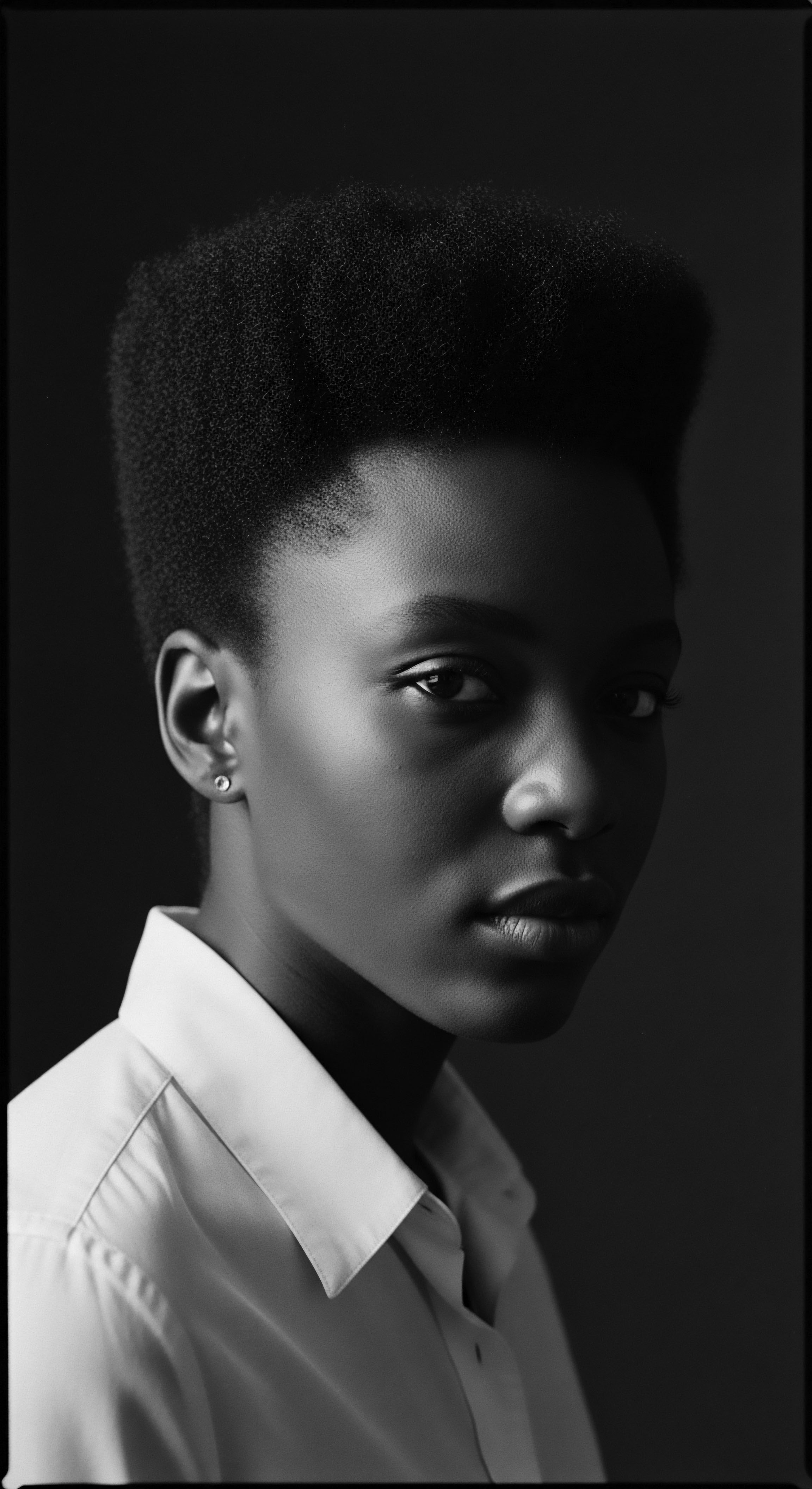
Intermediate
The intermediate meaning of Color Calibration for textured hair delves into the intentional practices and cultural methodologies employed across generations to harmonize with, protect, and subtly enhance hair’s natural pigment story. It moves beyond basic biological understanding to encompass the wisdom accumulated over centuries, a testament to ancestral care, and the nuanced perception of beauty within diverse communities. This depth of understanding acknowledges that hair color is not merely a biological attribute but a living canvas, shaped by the elements, nurtured by tradition, and expressive of identity.
The significance of Color Calibration in this context is found in the deliberate choices made by our forebears regarding their hair. They understood that external forces—the relentless sun, drying winds, or even daily handling—could affect the hair’s vitality and, consequently, its perceived color. Ancient practices of oiling, clay application, and herbal rinses served multiple purposes ❉ conditioning the strands, protecting them from environmental rigors, and often imparting a subtle sheen or tint that enriched the hair’s natural shade without stripping its integrity. This approach represented a sophisticated form of calibration, where the goal was to align the hair’s appearance with a holistic vision of health and cultural expression.
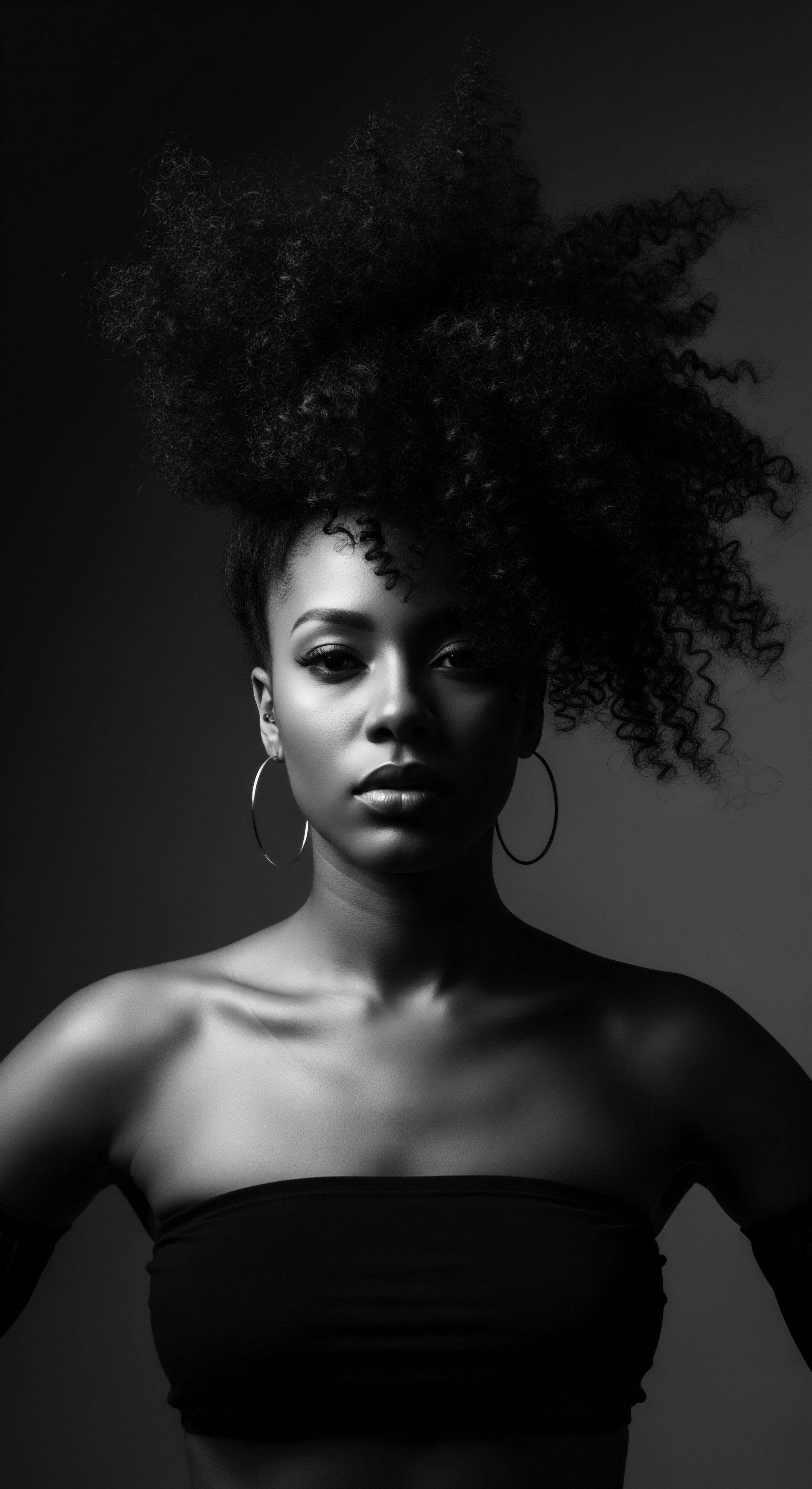
The Tender Thread ❉ Living Traditions of Care and Community
Within the rich tapestry of ancestral hair care, the concept of Color Calibration manifests through the deliberate application of natural elements. These practices were often communal, interwoven with rites of passage and daily rituals, fostering a deep connection to the hair as a symbol of heritage and well-being. The application of plant-based concoctions and nutrient-rich oils served not only to moisturize and strengthen but also to influence the hair’s reflective qualities, thereby subtly calibrating its visual presentation.
For instance, the widespread use of Henna (Lawsonia inermis) across North Africa and parts of the diaspora illustrates a historical approach to color calibration. Derived from the crushed leaves of the henna plant, this natural dye imparts warm reddish-brown tones, simultaneously conditioning the hair and adding a discernible shine. Its application was often a communal affair, symbolizing celebration and connection, where the resulting hue was a gentle enhancement of the hair’s existing melanin, not a drastic alteration. Such methods reflect an ancestral understanding that hair color is intrinsically tied to its health and the environment it exists within.
Another powerful example exists in the traditional practices of various West African communities, where natural clays and ochres were applied to hair. These earth-derived substances offered protection from the sun, acted as cleansing agents, and, importantly, lent a specific color or sheen to the hair. The precise choice of material and its preparation represented a form of intentional color calibration, where the outcome was less about “dyeing” and more about adornment that resonated with cultural values and the natural environment. These practices were not random; they were part of an inherited knowledge system focused on maintaining hair’s vitality and honoring its visual language.
| Traditional Practice/Ingredient Henna (Lawsonia inermis) |
| Primary Benefit for Hair Strengthening, conditioning, scalp health. |
| Influence on Hair Color Perception Adds warm reddish-brown tones, increases shine, enhances natural depth. |
| Traditional Practice/Ingredient Shea Butter |
| Primary Benefit for Hair Moisturizing, protection from environmental damage, nourishing. |
| Influence on Hair Color Perception Boosts natural luster, creates a healthy sheen that reflects light, deepening perceived color. |
| Traditional Practice/Ingredient Red Ochre/Clays |
| Primary Benefit for Hair Protection from sun/insects, cleansing, cultural adornment. |
| Influence on Hair Color Perception Imparts reddish/earthy tones, alters light reflection, signifying social status or beauty. |
| Traditional Practice/Ingredient Herbal Rinses (e.g. Rosemary) |
| Primary Benefit for Hair Promotes growth, enhances shine, scalp health. |
| Influence on Hair Color Perception Can subtly deepen tones, enhances natural highlights, adds a healthy gleam. |
The meaning of Color Calibration, then, extends to the recognition that hair’s color is deeply intertwined with its overall health and how it is cared for. A well-nourished strand, rich with its natural oils and protective elements, reflects light differently from a dry, brittle one. This difference in light reflection alters our perception of its hue, making healthy hair appear more vibrant and chromatically rich. Therefore, centuries of traditional hair oiling, cleansing, and conditioning regimens were, in essence, acts of Color Calibration, ensuring the hair expressed its most radiant self.
It is important to remember that these ancestral methods were often specific to regional flora and available resources. Communities adapted their care practices to their immediate environments, drawing upon the wisdom of their land. This adaptability meant a diverse range of natural ingredients was used, each contributing to the subtle chromatic and textural calibration of hair within its unique cultural context. The deep respect for natural hair, a cornerstone of many African and diasporic traditions, formed the bedrock of these calibration efforts.

Academic
At an academic level, the definition of Color Calibration, particularly for textured hair, demands a rigorous examination that transcends superficial aesthetic concerns, delving into the scientific underpinnings of melanin expression, the optical physics of light interaction with complex hair geometries, and the socio-cultural frameworks that interpret and value hair color through the lens of heritage. This understanding requires a synthesis of trichology, cultural anthropology, and the lived experiences of Black and mixed-race individuals, recognizing that hair’s inherent color is a dynamic, multi-layered phenomenon.
The profound meaning of Color Calibration in this sophisticated context refers to the precise identification, characterization, and harmonious enhancement of hair’s intrinsic chromatic properties, considering both its biochemical composition and its perceived visual qualities under varying conditions. It is the conscious application of knowledge to achieve an outcome where the hair’s color is not just altered, but brought into a state of optimal expression, often in alignment with ancestral aesthetic values and protective practices. This involves a deep appreciation for the specific ratios and distribution of Eumelanin and Pheomelanin within the cortex of each strand, which dictates its foundational color. Textured hair, with its unique structural variances, presents a complex canvas where light scattering and absorption are influenced by curl pattern, density, and strand thickness, creating optical effects that make its true color appear differently across highlights and shadowed areas.
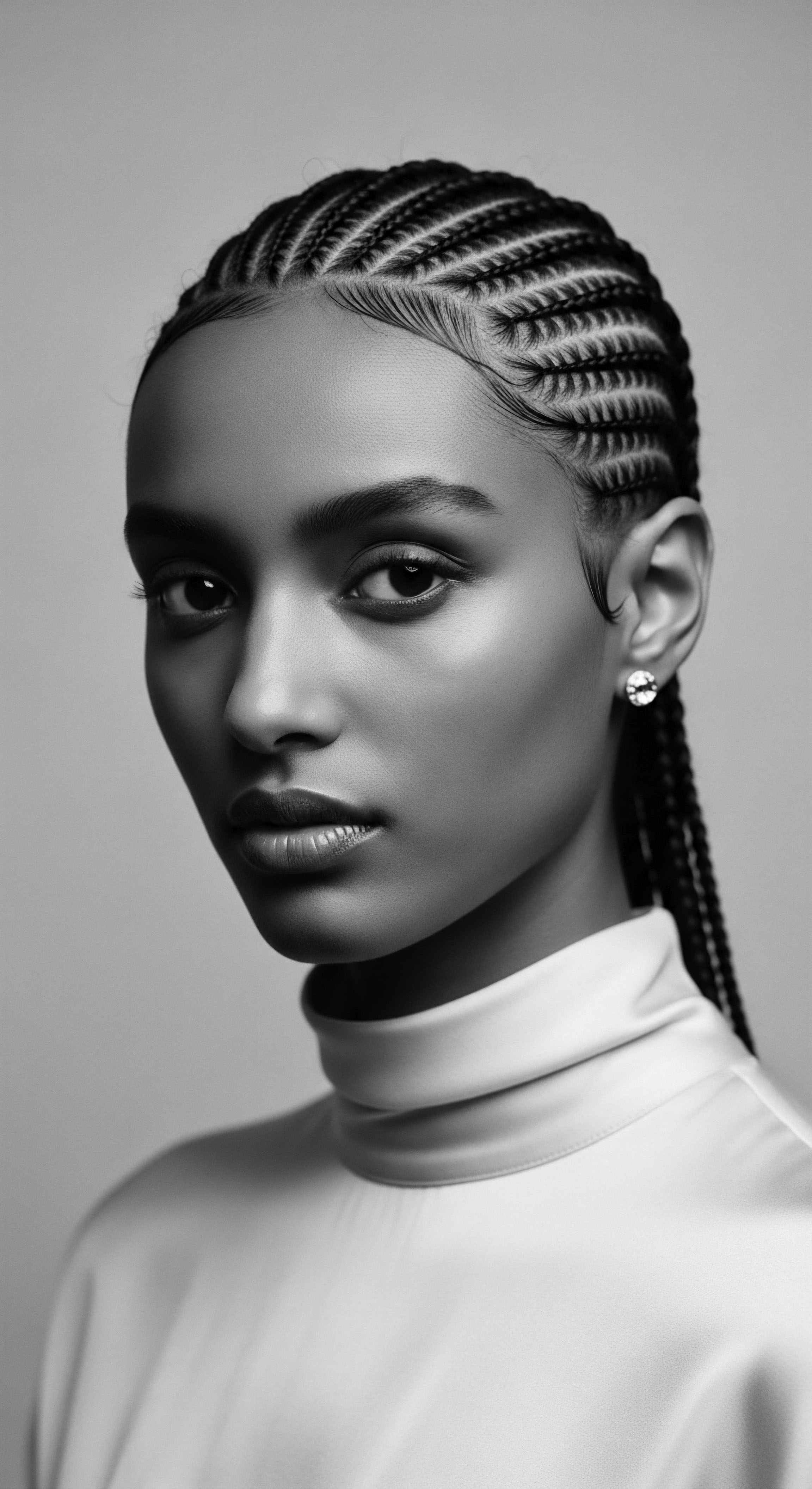
The Biochemical Architecture of Hair Color
Hair color is a direct consequence of melanogenesis, the process by which melanocytes, residing in the hair follicle, produce melanin granules. The two principal forms, eumelanin (black and brown) and pheomelanin (yellow to red), are synthesized from the amino acid tyrosine. The quantity, size, and distribution of these melanin granules within the hair shaft’s cortical cells dictate the hair’s natural hue. High concentrations of eumelanin typically result in black or dark brown hair, while a greater proportion of pheomelanin or a sparse distribution of eumelanin can yield red, blonde, or lighter brown shades.
The inherent genetic diversity within populations of African descent leads to an expansive spectrum of melanin compositions, resulting in a rich array of natural hair colors from deepest ebony to various shades of brown, often with subtle red or golden undertones. This biochemical reality forms the bedrock of any meaningful Color Calibration, requiring a scientific literacy that respects the hair’s natural predispositions.
Furthermore, the physical structure of textured hair amplifies the complexity of color perception. Coiled and helical strand geometries lead to unique light reflection and absorption patterns, contributing to the hair’s characteristic depth and dimension. This means that a strand of black hair, when viewed in strong sunlight, might reveal unexpected flashes of warm reddish-brown, an optical effect of the light interacting with the melanin and the hair’s three-dimensional form. Therefore, true Color Calibration considers these optical phenomena, aiming to work with, rather than against, the hair’s natural chromatic expressiveness.
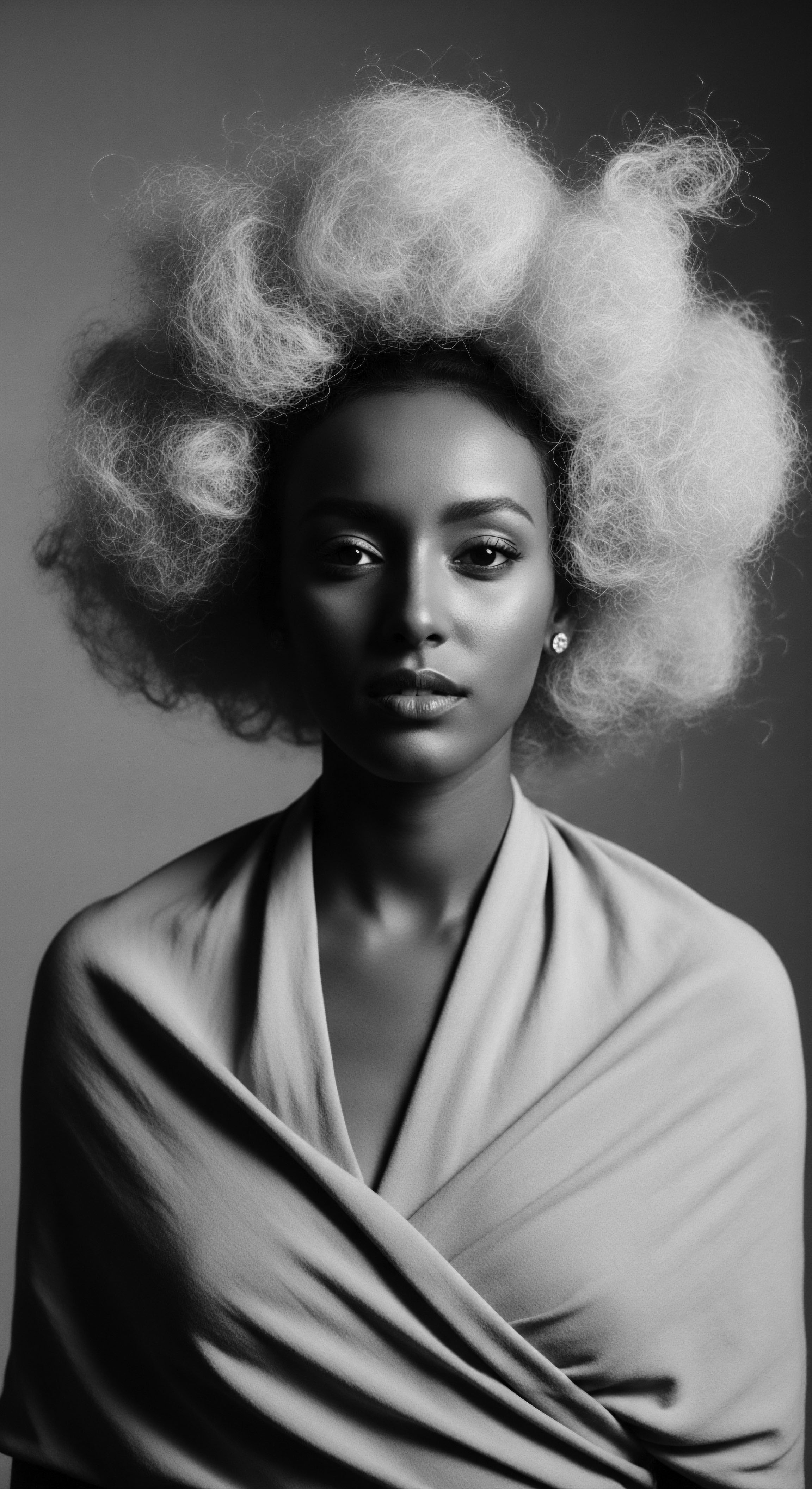
A Case Study in Ancestral Color Calibration ❉ The Himba People of Namibia
To underscore the deeply embedded, heritage-centric meaning of Color Calibration, we turn to the Himba people of Namibia. Their millennia-old practice of applying Otjize, a distinctive paste of ochre (a natural red clay pigment), butterfat, and aromatic resin, to their skin and hair, stands as a profound historical example of culturally calibrated hair aesthetics. This tradition is far more than mere adornment; it is a living embodiment of Color Calibration, deeply intertwined with identity, status, and environmental adaptation.
The reddish hue imparted by otjize symbolizes not only the earth’s rich red color but also blood, representing the essence of life and fertility. Himba women begin applying otjize from puberty, shaping their hair into intricate braided styles coated in the paste, which signifies age, marital status, and social standing within the community. This practice serves multiple functions ❉ it acts as a protective barrier against the harsh desert sun, shields the skin from UV rays, prevents dryness in an arid climate, and even repels insects. The application itself is a daily ritual, passed down through generations, emphasizing its centrality to Himba life.
In an academic context, the Himba’s use of otjize represents a sophisticated system of Color Calibration that integrates:
- Environmental Adaptation ❉ The ochre protects hair and skin from the desert environment, demonstrating a practical calibration to harsh conditions.
- Cultural Symbolism ❉ The specific red color carries deep spiritual meaning, symbolizing life, fertility, and connection to ancestral lands. This is a cultural calibration of color, where hue conveys profound narrative.
- Social Communication ❉ The distinct hair colors and styles, created with otjize, communicate vital information about a woman’s age, marital status, and social position within the Himba societal structure. This is a societal calibration of hair color as a visual language.
- Holistic Well-Being ❉ Beyond aesthetics, the paste helps maintain hygiene and health in a water-scarce region, showing that color calibration is intrinsically linked to physical well-being.
This traditional knowledge, passed orally and experientially through generations, represents an authentic understanding of how to work with the hair’s natural attributes and environment to achieve desired outcomes. It offers a counter-narrative to modern chemical processes, highlighting a form of Color Calibration that prioritizes harmony with nature and cultural continuity over drastic alteration. The Himba’s practice reminds us that color in hair, particularly textured hair, holds layers of meaning often overlooked by a purely scientific or commercial gaze. The integration of goat hair and woven hay into these elaborate braids, also coated in otjize, further expands the chromatic and structural calibration, creating forms that are both functional and deeply symbolic.
The Himba’s ritual use of otjize illustrates Color Calibration as an ancestral practice of cultural, spiritual, and environmental harmony in hair.
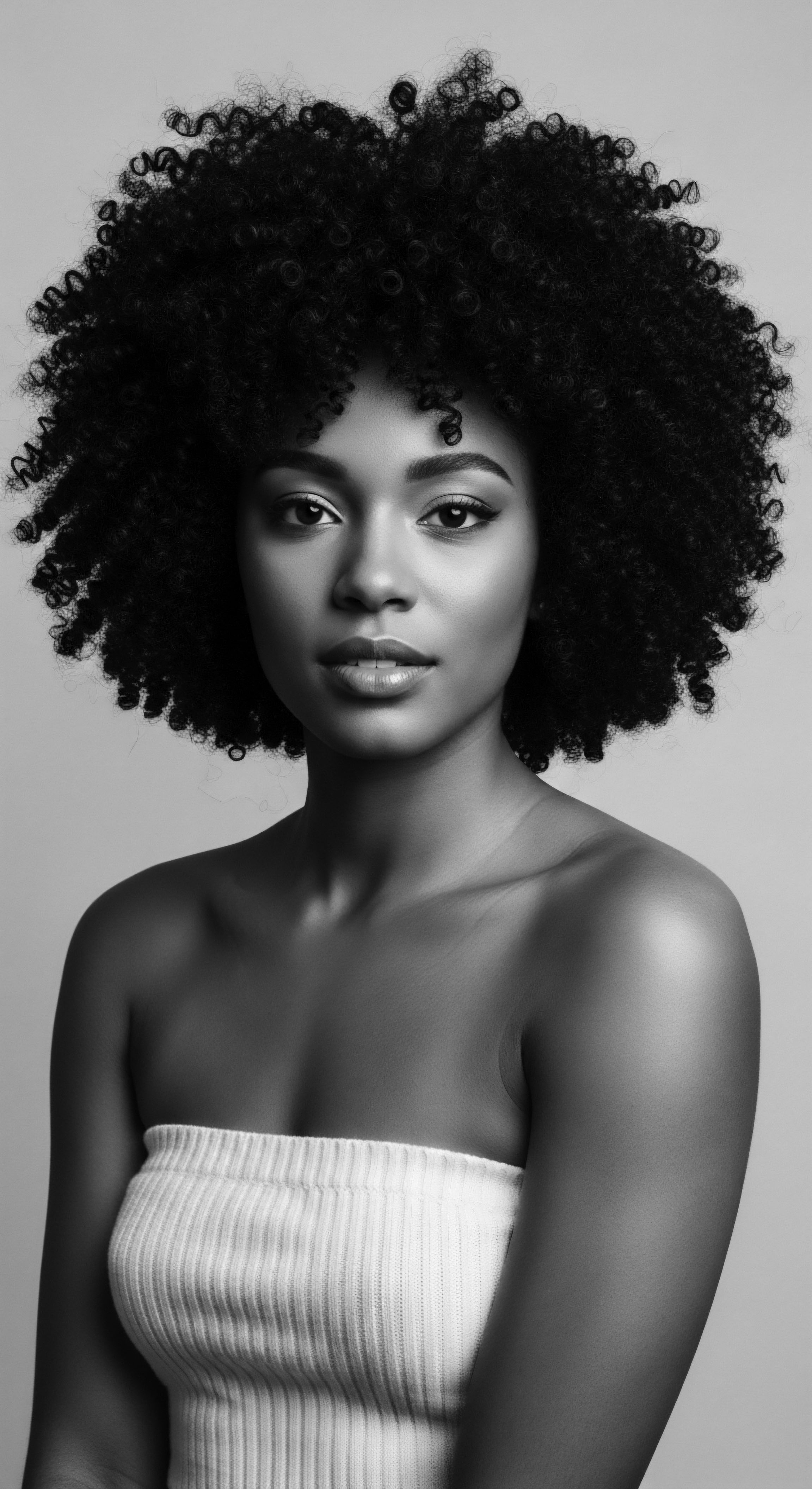
The Unbound Helix ❉ Voicing Identity and Shaping Futures
The influence of racialized beauty standards has historically placed hair color and texture within rigid hierarchies, often devaluing the intrinsic beauty of Black and mixed-race hair. The concept of “good hair” often equated to straighter, more European textures and colors, implicitly marginalizing the diverse chromatic and structural realities of textured hair. This societal calibration of beauty standards created immense psychological pressure and economic disparities within Black communities, leading to the widespread adoption of harsh chemical treatments designed to alter natural hair to align with these dominant norms.
However, the ongoing movement to embrace natural hair represents a powerful act of reclaiming Color Calibration. This movement is a deliberate re-centering of beauty standards around the inherent qualities of textured hair, including its authentic color. It involves understanding the unique light interaction, the subtle shifts in tone under different illumination, and the natural chromatic variations that are a birthright. This journey of acceptance and celebration is a form of recalibrating one’s perception and valuing the hair’s authentic self.
The decision to honor natural hair color, to nurture its inherent vibrancy through gentle, traditional-inspired care, becomes a profound act of self-definition. It speaks to a conscious choice to align with ancestral wisdom and reject external impositions that seek to dilute the rich spectrum of Black and mixed-race identity. This deliberate shift shapes a future where Color Calibration is rooted in reverence for one’s heritage, fostering a deeper connection to the living legacy of hair and its profound expressive capabilities. The conversation around hair color for textured strands is moving towards one that values preservation, respect for inherent pigment, and conscious choices that celebrate individuality.
| Aspect Motivation for Hair Color Influence |
| Ancestral/Heritage-Based Color Calibration Enhancement of natural hue, protection, cultural symbolism, social status, spiritual connection. |
| Imposed Eurocentric Standards (Historical Context) Conformity to external beauty ideals, perceived social acceptance, assimilation. |
| Aspect Approach to Color |
| Ancestral/Heritage-Based Color Calibration Working with natural melanin, subtle shifts, deepening richness through natural ingredients (e.g. ochre, henna). |
| Imposed Eurocentric Standards (Historical Context) Altering natural pigment, often through harsh chemicals, to mimic lighter or straighter hair types. |
| Aspect Perceived Outcome |
| Ancestral/Heritage-Based Color Calibration Healthy, vibrant hair reflective of natural color and cultural identity. |
| Imposed Eurocentric Standards (Historical Context) "Good hair" defined by approximation to European textures and colors, often at the expense of hair health. |
Ultimately, Color Calibration for textured hair, when viewed through an academic and heritage-centric lens, is an intricate interplay of genetics, optical physics, and cultural meaning. It challenges us to move beyond superficial interpretations of color, urging us to consider the profound historical and social narratives embedded within each strand. The understanding and application of Color Calibration become a powerful means to honor ancestral wisdom, celebrating the inherent beauty of diverse hair textures and their rich chromatic expressions.

Reflection on the Heritage of Color Calibration
The journey through the definition of Color Calibration, from the microscopic dance of melanin to the sweeping narratives of ancestral practices, offers a profound meditation on the enduring soul of a strand. Our exploration has revealed that this concept, far from being a mere technicality, is woven into the very fabric of identity and collective memory for those with textured hair. It is a testament to the ingenious ways our forebears understood and honored their hair, not as a blank canvas for arbitrary change, but as a living testament to heritage, a symbol of life’s essence, and a conduit to ancestral wisdom.
The echoes from the source—the biological marvel of eumelanin and pheomelanin—lay the foundation for a profound appreciation of the hair’s intrinsic chromatic capabilities. This foundational knowledge is not abstract; it is deeply felt in the subtle variations of color that manifest under different lights, revealing hidden depths within familiar hues. The tender thread of living traditions, from the communal application of rich ochre by the Himba to the conditioning power of henna in ancient societies, speaks volumes about the holistic approach to hair care that instinctively calibrated for health, beauty, and cultural resonance. These practices, passed through generations, were acts of reverence, ensuring that hair’s appearance aligned with a deeper understanding of its purpose and place in the world.
Today, as the unbound helix continues its journey into future expressions, the contemporary conversation around Color Calibration must remain tethered to these deep roots. It is a call to conscious practice, urging us to consider the historical weight and cultural significance of hair color. It is an invitation to celebrate the vibrant spectrum of Black and mixed-race hair in all its natural glory, acknowledging the resilience and self-determination required to reclaim and honor its authentic hues against centuries of imposed standards. The true calibration lies not just in technical precision but in the heart’s alignment with the legacy of strands, a legacy of enduring beauty, profound meaning, and unbroken connection across time.

References
- Byrd, A. D. & Tharps, L. L. (2002). Hair Story ❉ Untangling the Roots of Black Hair in America. St. Martin’s Press.
- Dabiri, E. (2020). Twisted ❉ The Tangled History of Black Hair Culture. Dey Street Books.
- Hendricks, M. E. (2012). The hair and beauty industry in South Africa ❉ a historical perspective. In M. E. Hendricks (Ed.), Hair, beauty, and women’s empowerment ❉ The South African experience (pp. 1-17). HSRC Press.
- Ito, S. (2011). A chemist’s view of melanogenesis. Pigment Cell & Melanoma Research, 24(1), 63-74.
- Kedi, C. (2015). Beautifying the Body in Ancient Africa and Today. Books of Africa.
- Robinson, N. (2011). Skin tone, hair texture, and internalized racism ❉ An examination of the relationship between colorism, hair politics, and body image among African American women. Journal of Black Studies, 42(4), 355-373.
- Sieber, R. (1987). African textiles and decorative arts. The Museum of Primitive Art.
- Soroka, S. (2024). Hair Pigmentation Chemistry. The Trichological Society.
- Van der Post, L. (1958). The Lost World of the Kalahari. Penguin Books.
- Walsh, S. Liu, F. Wollstein, A. & Kayser, M. (2011). The genetic determination of human hair color. Human Genetics, 129(4), 443-454.
